Abstract
Vibrios were isolated from red tides caused by Mesodinium rubrum and also throughout the year in the Ria de Pontevedra, Spain. The isolates were grouped into 14 phena by numerical toxonomy. Strains associated with red tides were restricted to four phena: phena I and II were Vibrio alginolyticus, and phena III and IV were Vibrio tubiashii and Vibrio anguillarum, respectively. V. anguillarum-like strains (phena V through XI) predominated throughout the year outside the red tide areas. Cytotoxicity assays conducted in different poikilothermic and homoiothermic cell lines showed that cytotoxin production was not necessarily associated with the species selected during the red tides.
Full text
PDF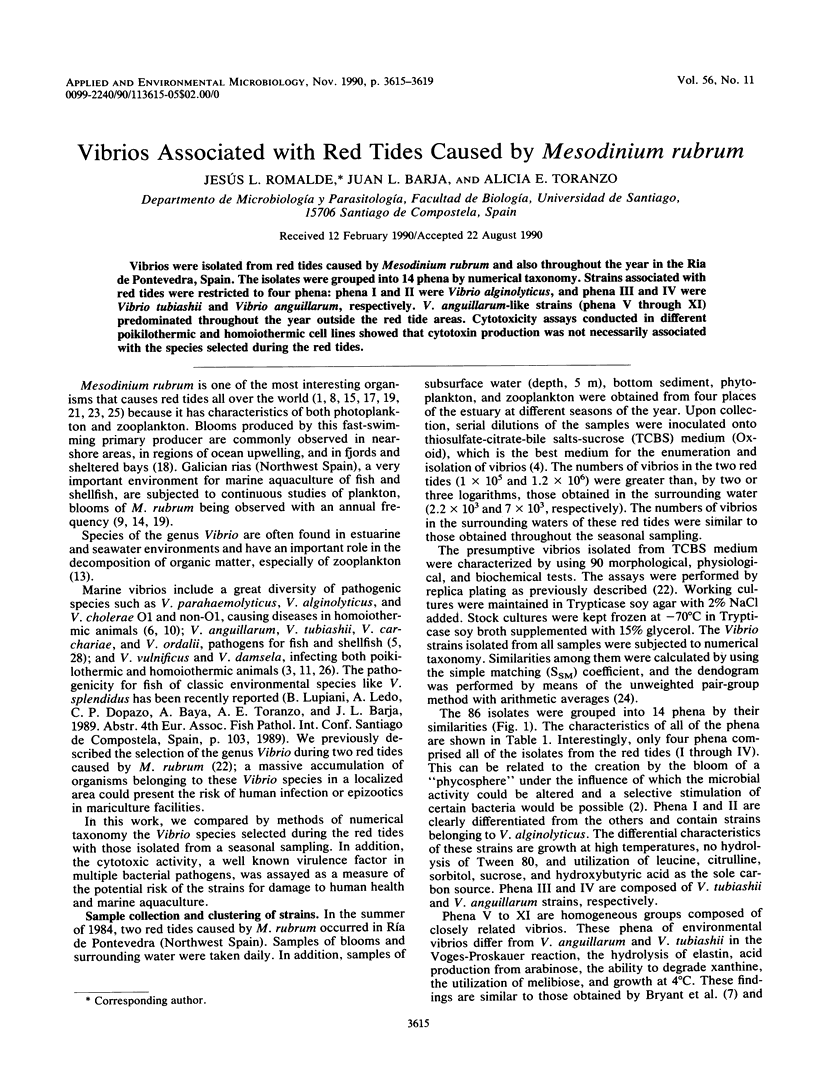
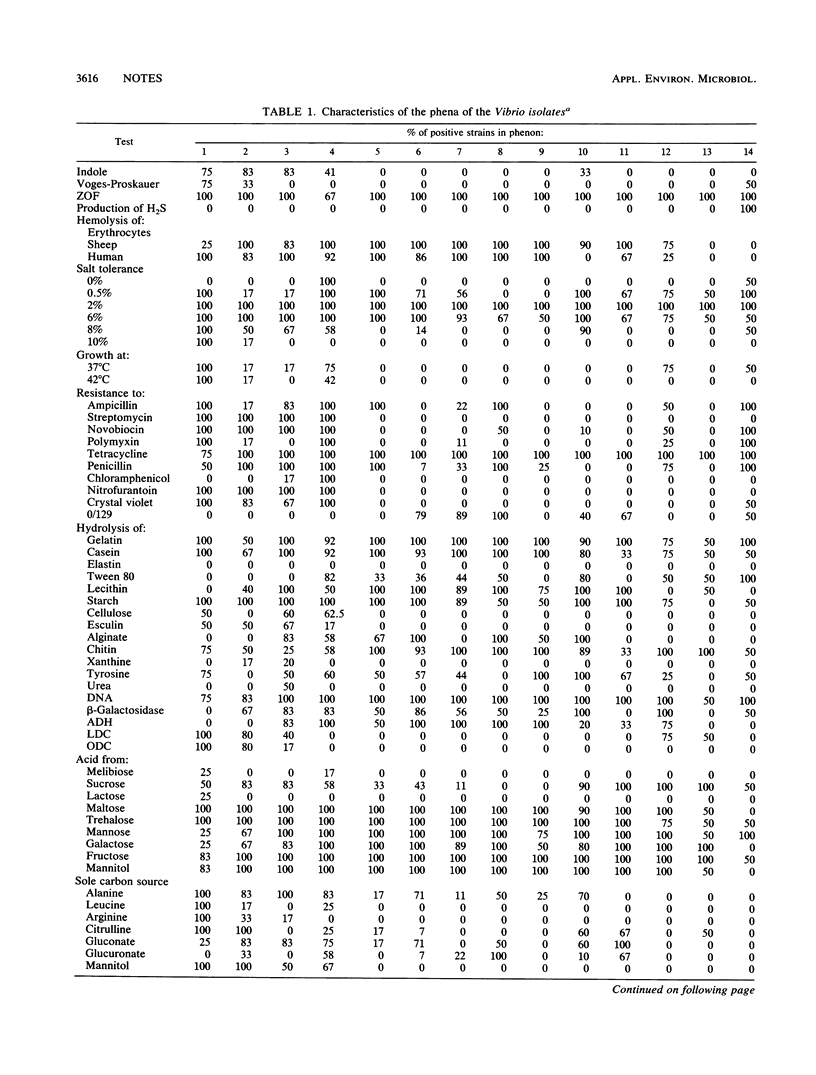
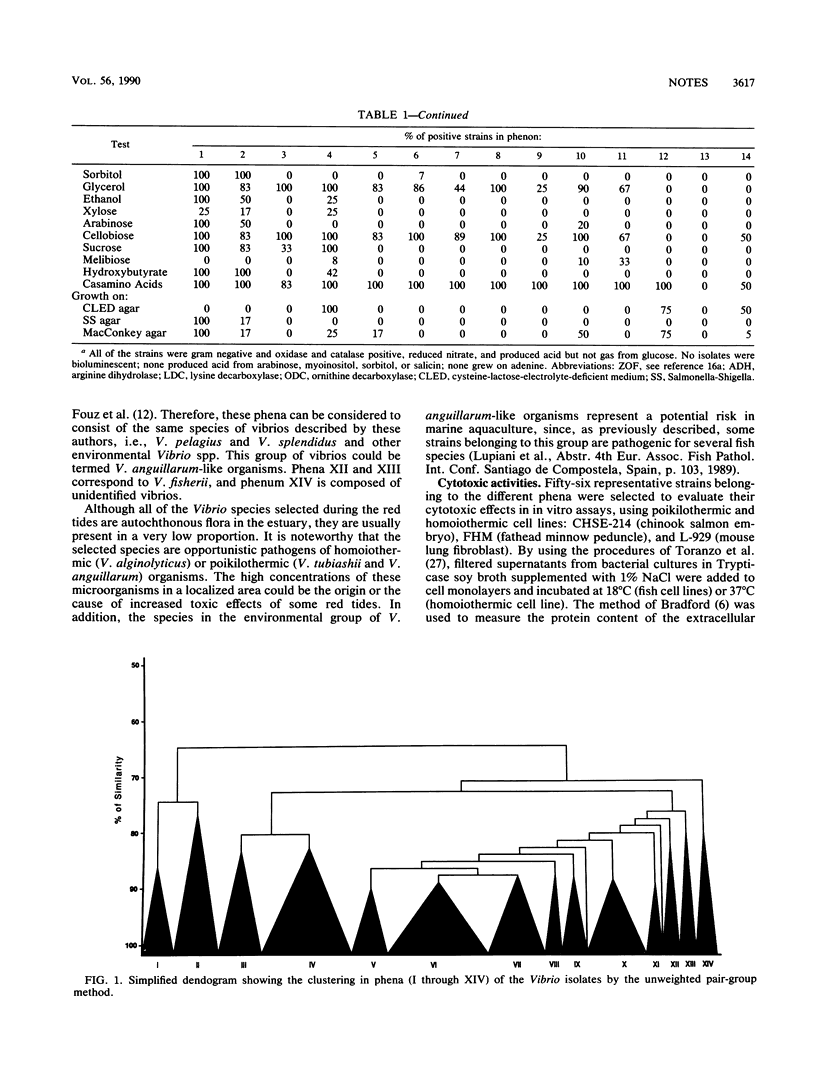
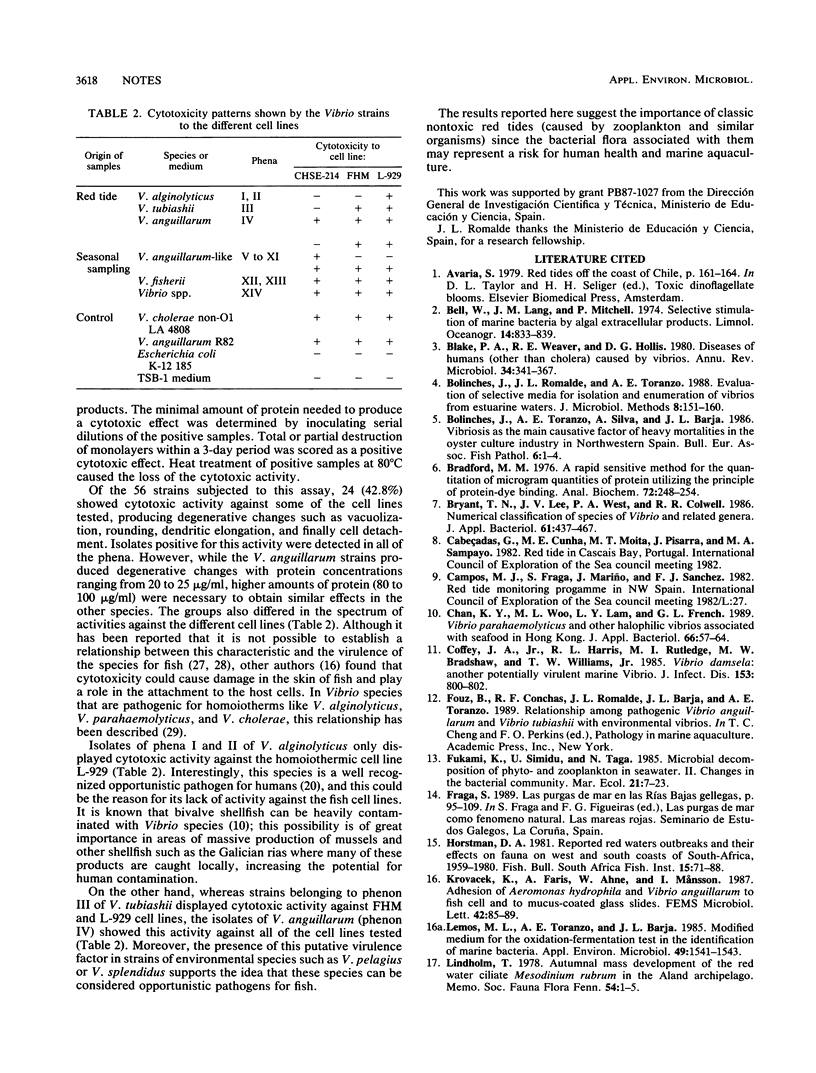
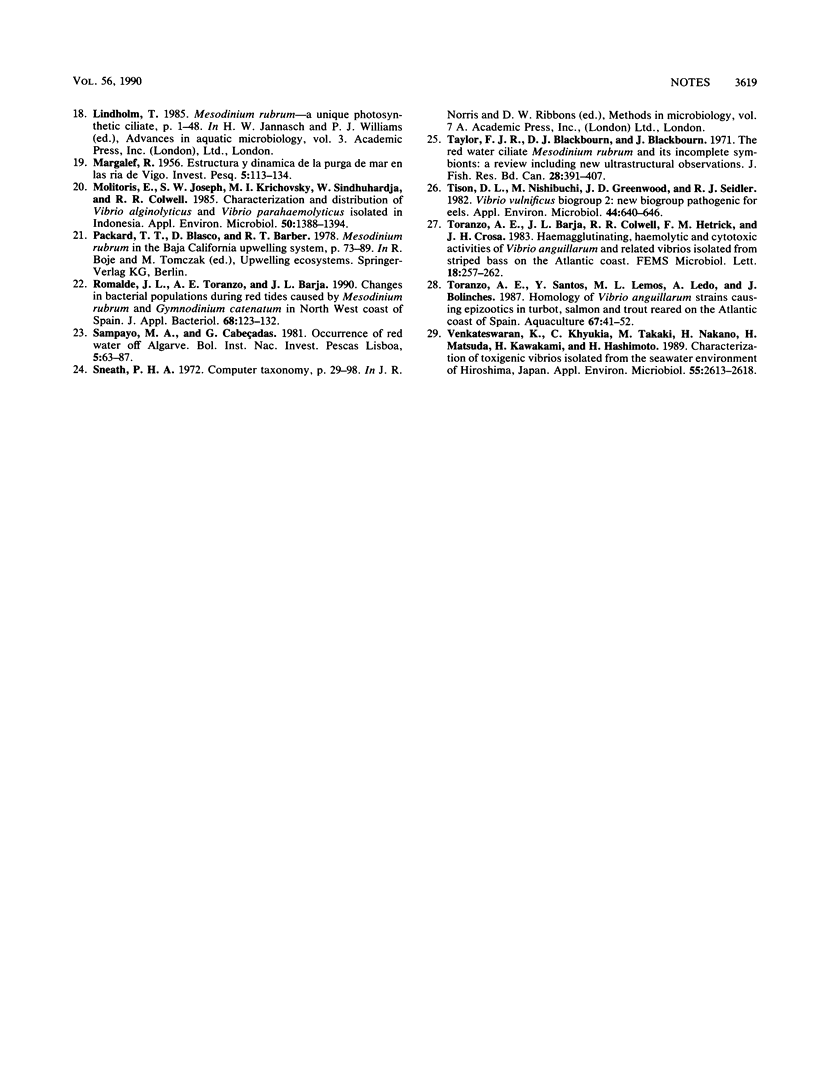
Selected References
These references are in PubMed. This may not be the complete list of references from this article.
- Blake P. A., Weaver R. E., Hollis D. G. Diseases of humans (other than cholera) caused by vibrios. Annu Rev Microbiol. 1980;34:341–367. doi: 10.1146/annurev.mi.34.100180.002013. [DOI] [PubMed] [Google Scholar]
- Bradford M. M. A rapid and sensitive method for the quantitation of microgram quantities of protein utilizing the principle of protein-dye binding. Anal Biochem. 1976 May 7;72:248–254. doi: 10.1006/abio.1976.9999. [DOI] [PubMed] [Google Scholar]
- Bryant T. N., Lee J. V., West P. A., Colwell R. R. Numerical classification of species of Vibrio and related genera. J Appl Bacteriol. 1986 Nov;61(5):437–467. doi: 10.1111/j.1365-2672.1986.tb04308.x. [DOI] [PubMed] [Google Scholar]
- Chan K. Y., Woo M. L., Lam L. Y., French G. L. Vibrio parahaemolyticus and other halophilic vibrios associated with seafood in Hong Kong. J Appl Bacteriol. 1989 Jan;66(1):57–64. doi: 10.1111/j.1365-2672.1989.tb02454.x. [DOI] [PubMed] [Google Scholar]
- Coffey J. A., Jr, Harris R. L., Rutledge M. L., Bradshaw M. W., Williams T. W., Jr Vibrio damsela: another potentially virulent marine vibrio. J Infect Dis. 1986 Apr;153(4):800–802. doi: 10.1093/infdis/153.4.800-a. [DOI] [PubMed] [Google Scholar]
- Lemos M. L., Toranzo A. E., Barja J. L. Modified medium for the oxidation-fermentation test in the identification of marine bacteria. Appl Environ Microbiol. 1985 Jun;49(6):1541–1543. doi: 10.1128/aem.49.6.1541-1543.1985. [DOI] [PMC free article] [PubMed] [Google Scholar]
- Molitoris E., Joseph S. W., Krichevsky M. I., Sindhuhardja W., Colwell R. R. Characterization and distribution of Vibrio alginolyticus and Vibrio parahaemolyticus isolated in Indonesia. Appl Environ Microbiol. 1985 Dec;50(6):1388–1394. doi: 10.1128/aem.50.6.1388-1394.1985. [DOI] [PMC free article] [PubMed] [Google Scholar]
- Romalde J. L., Toranzo A. E., Barja J. L. Changes in bacterial populations during red tides caused by Mesodinium rubrum and Gymnodinium catenatum in North West Coast of Spain. J Appl Bacteriol. 1990 Feb;68(2):123–132. doi: 10.1111/j.1365-2672.1990.tb02556.x. [DOI] [PubMed] [Google Scholar]
- Tison D. L., Nishibuchi M., Greenwood J. D., Seidler R. J. Vibrio vulnificus biogroup 2: new biogroup pathogenic for eels. Appl Environ Microbiol. 1982 Sep;44(3):640–646. doi: 10.1128/aem.44.3.640-646.1982. [DOI] [PMC free article] [PubMed] [Google Scholar]
- Venkateswaran K., Kiiyukia C., Takaki M., Nakano H., Matsuda H., Kawakami H., Hashimoto H. Characterization of toxigenic vibrios isolated from the freshwater environment of Hiroshima, Japan. Appl Environ Microbiol. 1989 Oct;55(10):2613–2618. doi: 10.1128/aem.55.10.2613-2618.1989. [DOI] [PMC free article] [PubMed] [Google Scholar]


